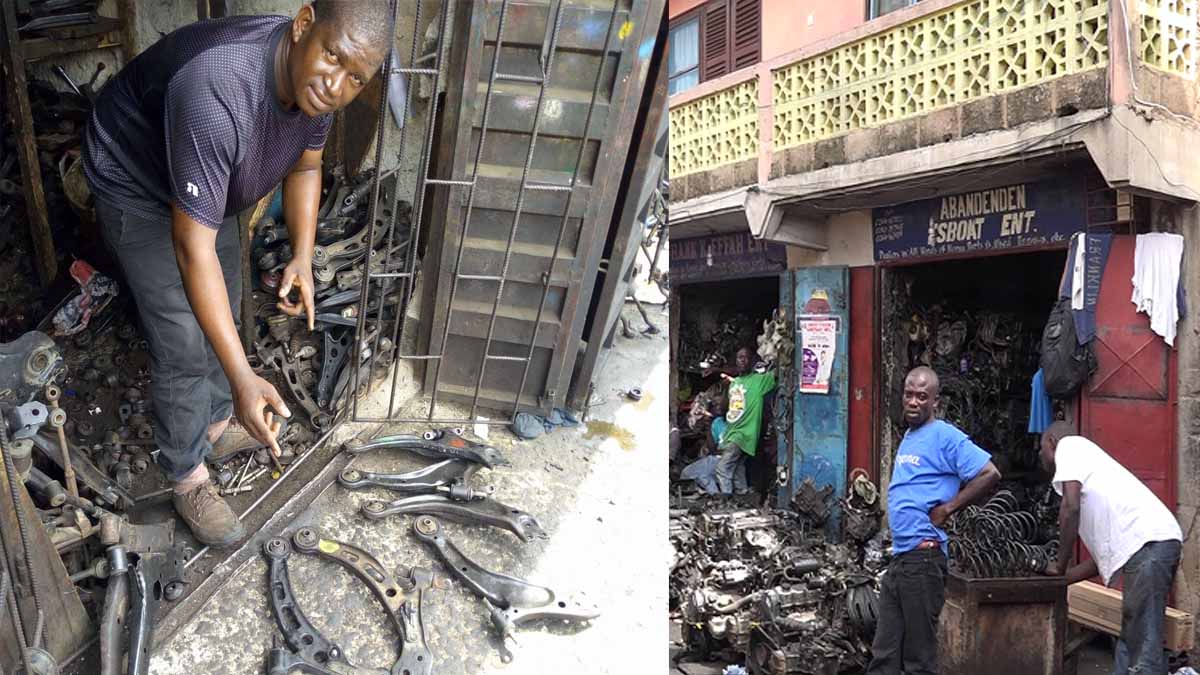Be it in the world of fashion or technology, everything that is created has a fake counterpart. There’s not much difference in the automotive industry as counterfeit car spare parts and accessories are sold so openly.
Table of Contents
Making the mistake of purchasing a bogus auto part is one of the worries of many drivers. Purchasing a bogus auto part will either result in a full financial loss or leave you stuck on the road when the vehicle breaks down.
Buy top trending Car accessories in Lagos and Original Korea Battery now Check @carfanzy Lagos on Instagram
We have prepared advice on how to recognize fake car parts before you buy them to make it simpler for you to avoid falling into this trap. Look at this advice:
What Exactly Are Fake Car Parts?
Original Equipment Manufacturers (OEM) and aftermarket companies make spare parts for cars in accordance with the safety and quality standards of the automotive industry. On the other hand, fake parts might look and feel like real ones, but the major difference lies in the composition of the material that is used to make them. Since most of these parts are way cheaper than the original ones, they do not comply with the safety standards set by the industry to lower the cost of production, thereby putting more drivers at risk.
- Employ a Reliable Mechanic
This advice is presented first because, in most cases, the mechanic makes the purchases rather than you. You may never be able to purchase these parts on your own due to time or other constraints; therefore, you simply need to pay the mechanic to make the purchase.
A careful mechanic will be able to tell the difference between genuine and counterfeit parts, and he won’t cheat you by purchasing a counterfeit item after receiving payment from you for a genuine one.
- Look at the packaging closely
In some cases, the box contains the authentication. Some people who go above and beyond to create counterfeit goods occasionally struggle with packing. After inspecting the package, respond to the following queries:
Is the brand name or logo displayed correctly? What about the colours, artwork, and graphics? Is the brand name spelt correctly?
- Do they exist with identical marks?
Some businesses have distinctive logos that make it simple to identify their items in the marketplace and tell them apart from products that are knockoffs. One company that has elevated this is Toyota. When you check a Toyota product’s serial number and it is not located in the customary location where the identification number is generally, you may determine it is a fake. The packaging is typically vibrantly coloured and has not faded.
- Extremely affordable
The imitation part is typically sold for a lower price than the genuine item most of the time. Do not deceive yourself into believing that this is one of those great deals you can find at the grocery store. When it comes to spare parts, there are no good offers. You have both genuine and false goods. Therefore, if the price is excessively low compared to the original price, it is phoney and bad for your car.
- Missing Instructions
The majority of counterfeit parts will reveal themselves by providing unclear instructions with poor spelling and typography. Typos, missing diagrams, and one or more instruction steps will all be included.
- Serial numbers or holograms
All OEMs manufacture parts with their own specific serial numbers or holograms, which can be used to trace them back to the original manufacturer. Some OEM serial numbers might be printed straight on the box or on the spare part itself, while a fake would have the numbers on a sticker.
- Mismatched Parts
Compare the new part that you bought to the old part and look out for differences in colour, weight, changes in dimension, etc. A simple difference like mismatched fasteners might also be a sign of a fake spare part.
- Verify the weight
Comparing the replacement part to the one you are purchasing will help. Verify the weight and compatibility of the fasteners. If not perfectly, an authentic part should fit into the desired location with ease.
Conclusion
If you get your spare parts from a mechanic or a repair shop, always deal with highly regarded suppliers because they have a reputation to protect and would not tarnish it with fake parts. You can either bring your car to the authorised service centres or check online on their official website for a list of suppliers who sell genuine spare parts. You can also find mechanics with a licence to sell genuine OEM parts, so you don’t have to worry about your car being fixed with fake parts.
Since counterfeit or fake spare parts are designed to replicate the genuine ones, differentiating a fake one from a real one can be a real hassle. With cheap fake spare parts, you might think you are saving in terms of cost. The actual truth is that you would be spending more money on frequent repairs and replacements, not to mention how hazardous they can be. So, at the end of the day, always remember the cliché statement “if it’s too good to be true, it probably is,” as this rings especially true when it comes to fake spare parts.
Have 1 million naira and above to Buy or Sell Cars In Nigeria? Check Carmart.ng RIght Now
All rights reserved. Reproduction, publication, broadcasting, rewriting, or redistribution of this material and other digital content on carmart.ng is strictly prohibited without prior express written permission from Carmart Nigeria - Contact: [email protected]
Stay informed and ahead of the New Car info! Follow The Carmart Blog on WhatsApp for real-time updates, Cheap Cars, and Latest new car content. Don't miss Any –
Join The Carmart Blog Channel







